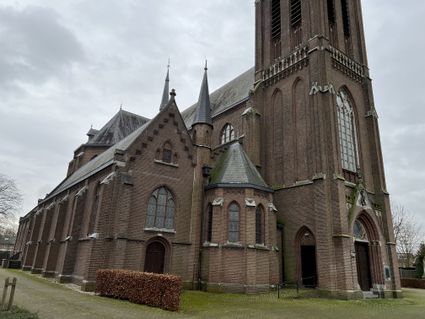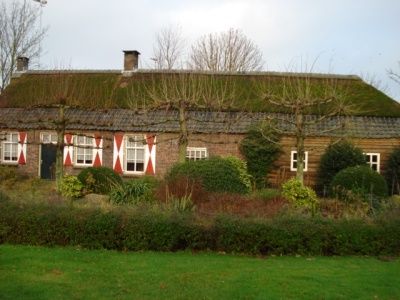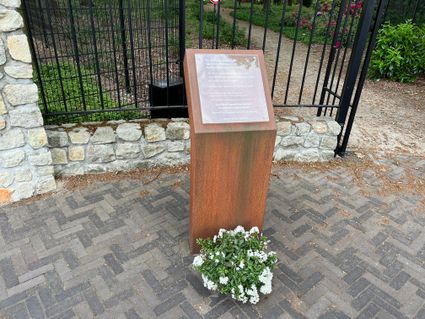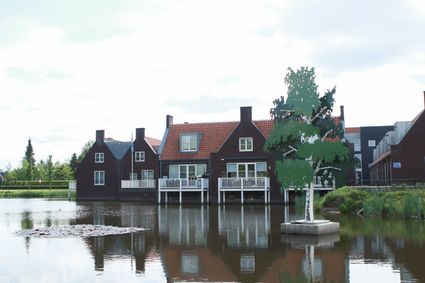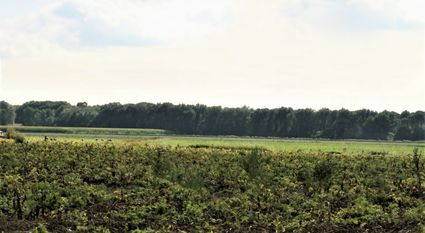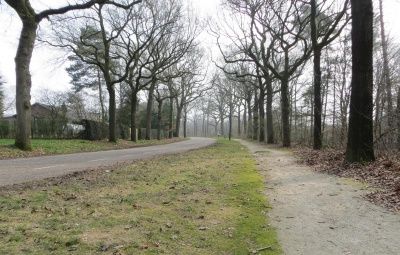Kapel Sint Antonius | Gemert
Gemert. The centuries-old Saint Anthony Chapel of the Guild of Saint Anthony and Sebastian.
At the corner of de Deel and Boekelseweg is a small field chapel dedicated to Saint Antonius, among other things the patron saint of pig farmers. This is the chapel of the green schut, one of the two militia guilds in Gemert. The first reference to the chapel, a National Monumental building, can be found in 1564, but the current version dates from 1841. Every year the green schut, also known as the Guild of St. Anthony and Sebastian, comes here to offer a silver piece to their patron saint. The chapel has a neoclassical interior, which was the most famous style at the time the chapel was built. For a long time, people went to the little chapel at 1 o'clock on Sunday to pray the rosary.
The…
Gemert. The centuries-old Saint Anthony Chapel of the Guild of Saint Anthony and Sebastian.
At the corner of de Deel and Boekelseweg is a small field chapel dedicated to Saint Antonius, among other things the patron saint of pig farmers. This is the chapel of the green schut, one of the two militia guilds in Gemert. The first reference to the chapel, a National Monumental building, can be found in 1564, but the current version dates from 1841. Every year the green schut, also known as the Guild of St. Anthony and Sebastian, comes here to offer a silver piece to their patron saint. The chapel has a neoclassical interior, which was the most famous style at the time the chapel was built. For a long time, people went to the little chapel at 1 o'clock on Sunday to pray the rosary.
The first mention of St. Anthony's Chapel was in 1564. Then it was probably a small building with mud walls and a straw roof. The mention of the chapel speaks of certain farmsteads nearby, and indeed one is in the process of rebuilding a farm opposite it. This Hoeve 'Beverdijk' was one of the most important fiefdoms of the Teutonic Order, the owners of the Heerlijkheid Gemert. The oldest reference to it dates back to the 14th century, the chapel could have been added later. There is also mention of a turnstile, a gateway that was used in country defenses or also in cattle pastures, by comparison, a turnstile is a barrier that does not go up but sideways. During the construction of the Doonheide residential area, a few hundred meters to the west, the remnants of a large manor were found. The bulwark consisted of seven rows of tripwires in front of an earthen wall, behind which the defenders were holed up. In front of the rampart was then the small river Peelse loop. Round lead bullets were found, so battles took place. A special feature of this rampart is its length and the already mentioned rows of stumbling pits, which were deep enough to break horses' legs. Possibly the turnpike had to do with this rampart, or perhaps it was simply a fence in a cattle pasture. After all, St. Anthony's Chapel is a field chapel, lying loose in or beside a field, meadow or field.
Saint Anthony was a hermit who lived in the third century AD. He wandered in the desert and was often plagued by the devil in many forms. He is sometimes depicted with a pig at his foot, as here, and is therefore considered a patron saint for pig farmers and invoked to drive away fever and (livestock) diseases. In the chapel is a large wooden statue of the saint, probably 19th century and also a painting of him on the altar.
Sources:
W. van Lierop, T. Thelen, Langs velden en wegen, 2006, Heemkundekring de Kommanderij, Gemert




